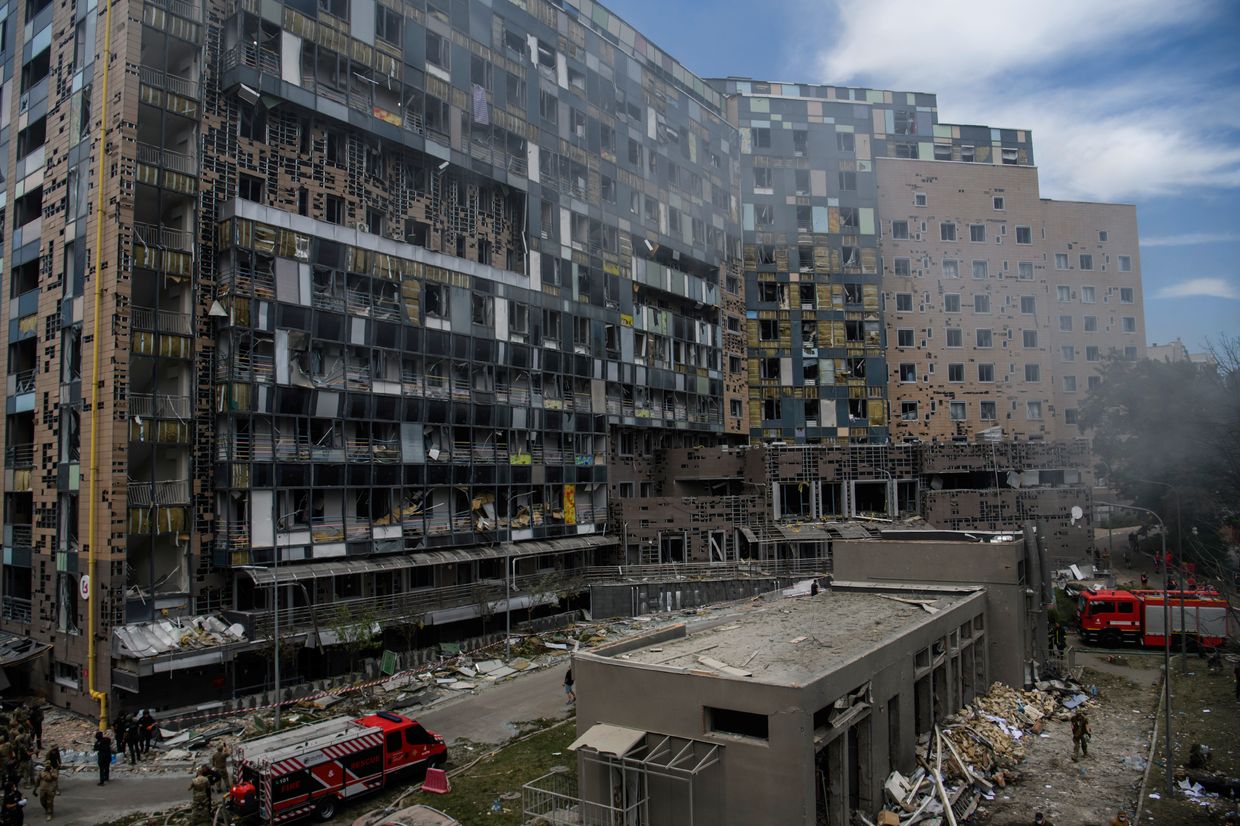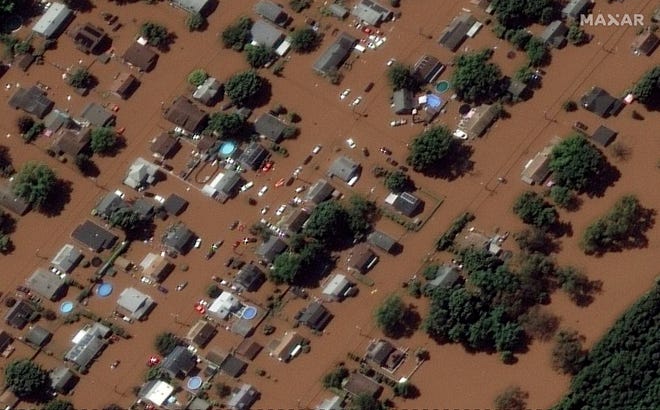A year after the devastation of Tropical Storm Ida, the town of Lambertville in Hunterdon County has become one of the first municipalities to formally consider a stormwater system to help protect it from future catastrophic flooding in the new era of climate change.
Lambertville has applied for state funding for a feasibility study to create a separate flood control utility. Once established, the utility will be able to charge landowners for so-called green infrastructure that will reduce flooding during severe storms. The fee will vary depending on the amount of paved surface on the properties – and therefore the volume of stormwater runoff.
“Building a storm sewer would provide a much-needed funding mechanism to minimize such impacts in the future, and would be an integral part of the broad range of sustainability measures the city is seeking to undertake,” Lumberville Mayor Andrew Novick wrote in his request to the state.
After the September 2021 storm caused at least $11 million in property damage, the Delaware River town of about 4,000 residents pondered what it could do to at least lessen the impact of heavier and more frequent downpours that come with warmer weather. , humid climate.
In his letter to the DEP, Mayor Andrew Novick said Ida dumped 8.44 inches of rain on Lumberville, one of the highest totals in the state — most of it in a six-hour period.
One answer is the storm sewer utility, a funding mechanism that pays for improvements like rain gardens and porous sidewalks that can absorb rainfall before it turns into runoff that floods streets, overflows storm drains and pollutes rivers. washed away from roads and parking lots.
At a public meeting on Oct. 6, Novick began a lengthy process of educating the public about the benefits of a stormwater system and urged residents to support the plan, which he believes will help protect the city from future storms.
While the stormwater utility is not the only possible way to deal with future flooding, it is the most effective, especially for smaller municipalities like Lumberville, which have limited options to seek funds from state or federal governments, Novick said. While millions of dollars in state and federal funding are now available for climate resilience and many cities across the country are coping with flooding without a stormwater system, it’s an attractive option for cities like Lumberville, the mayor said.
“Tracking down and applying for federal or even state money is not easy and not always practical,” Novick said. “Having a utility provides an ongoing revenue stream for stormwater management and climate resilience.”
About 2,000 in the US
Proponents of stormwater utilities say they are an attractive alternative to collecting additional money through property taxes or sewer fees. Proponents also argue that charging residents and business owners based on the amount of runoff their facilities generate creates an incentive to reduce impervious surface area.
Those arguments appear to have been accepted by the more than 2,000 towns, counties and city groups across the country that now have stormwater utilities, according to a count this year by Western Kentucky University.
But in New Jersey, only a handful of cities have implemented the idea, including Newark, Hoboken, Princeton and now Lambertville, and none have completed the process since a 2019 state law allowed but did not require cities to create utilities. services. The law allows municipalities, counties, groups of municipalities and sewerage services to create utilities.
In an effort to speed up the process, the state Department of Environmental Protection offered to pay for feasibility studies for cities and attracted about 30 applicants by the Nov. 1 grant deadline, according to Briana Callahan, stormwater manager for New Jersey Future, a nonprofit that advocates for utilities. .
“If we continue to build in Lumberville, we’re going to need tubes. We need to look at our zoning and change it, and we need a new storm sewer ordinance that would limit development.” – Jeff Tittle, Lambertville resident and former director of the New Jersey Sierra Club
At the October 6 meeting, Callahan gave a presentation titled Rest Easy When It Rains, arguing that stormwater service is a fair, dedicated, and stable source of funding that allows a municipality to raise capital, operate and maintain the resulting green infrastructure, and build public support for the program.
Novick said the DEP has not yet responded to an Oct. 18 letter requesting funds for the feasibility study. If the city doesn’t meet the state funding requirements, it will turn to the Conservation League’s Voter Education Fund, which was one of the speakers at the Oct. 6 town meeting, for help. The DEP did not immediately respond to a request for comment.
In his letter to the DEP, Novick said Ida dumped 8.44 inches of rain on Lumberville, one of the highest totals in the state — most of it in a six-hour period. The resulting flood resulted in more than $6.8 million in claims for 102 properties under the National Flood Insurance Program; nearly $2.1 million from the Federal Emergency Management Agency to 272 applicants for home repairs and nearly $3 million for road, creek, water pipe and storm sewer repairs.
The damage included the collapse of one of the city’s concrete culverts, which was repaired at a cost of $350,000 to FEMA, but the agency allowed restoration only to a previous standard, not to a level that anticipates larger storms in the future, Novick said.
While many cities would benefit from a storm system, Lamberville’s need is particularly acute because of its hedging between the Delaware River to the west and a steep hillside to the east, from which floodwaters poured into the city during Ida, said Callahan of New Jersey’s Future .
Regional approach
But not everyone likes this option. Jeff Titel, a Lambertville resident and former director of the New Jersey Sierra Club, argued that the stormwater service would not have saved the city from flooding during Ida. He said that the mechanism in Lamberville or anywhere else cannot work if it is created by cities, only if it solves the problem at the regional level.
During Ida, most of the city’s flooding came from areas like West Amwell, which lie on higher elevations to the east, so Lumberville was powerless to stem those waters, even though it was working with a stormwater utility at the time, Tittel said.
“Stormwater knows no boundaries, it should be done along watersheds,” he said.
A more effective solution, Titel argued, would be for Lumberville to limit development that promotes stormwater runoff because of the impervious surfaces it creates.
“If we continue to build in Lumberville, we’re going to need tubes,” he said. “We need to look at our zoning and change it, and we need a new storm sewer ordinance that would limit development.”
Meanwhile, Mayor Novick said he didn’t know how long the feasibility study would take, when the storm sewer might eventually be built, or how much it would cost the typical resident or business owner. He said the plan, if municipal leaders go ahead with it, will eventually be put to a referendum by residents, who will be consulted throughout the process.
“There will be broad outreach and stakeholder engagement along the way,” he said.













